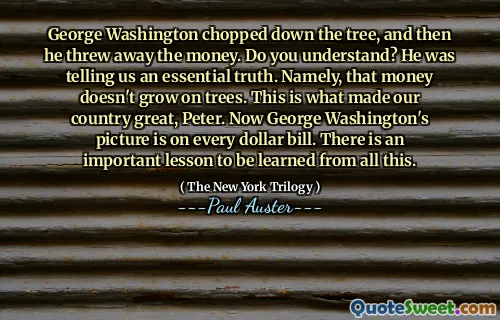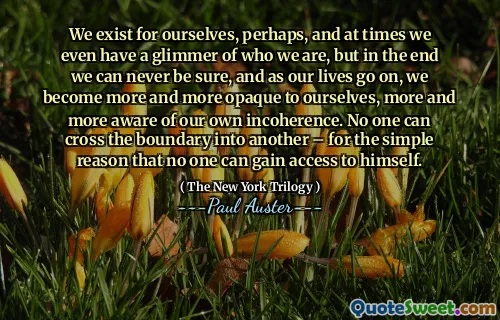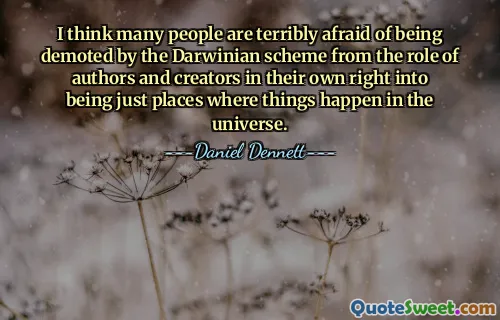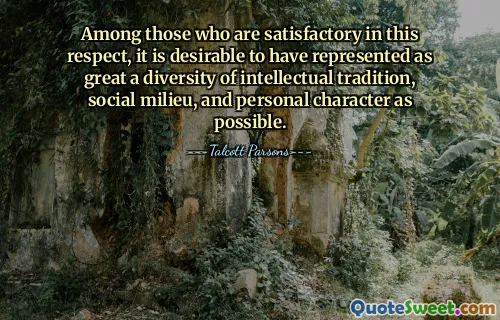
George Washington chopped down the tree, and then he threw away the money. Do you understand? He was telling us an essential truth. Namely, that money doesn't grow on trees. This is what made our country great, Peter. Now George Washington's picture is on every dollar bill. There is an important lesson to be learned from all this.
This quote offers a reflective commentary on the nature of value, perception, and the myths we tell ourselves. At first glance, it appears to reference the well-known idiom that "money doesn't grow on trees," highlighting a simple economic truth—that wealth requires effort and isn't effortlessly attained or abundant. However, beneath this surface lies a deeper critique of how truths are constructed and popularized within a societal narrative. The story of George Washington and the tree symbolizes foundational stories and symbols—national history baggage carried by figures who are often mythologized. The mention of Washington's picture on every dollar bill signifies how certain symbols become embedded in our collective consciousness, often elevating figures or ideals above the complex realities they represent. The narrative hints at the importance of understanding what is real versus what is constructed, urging us to question the stories behind our institutions, currencies, and national identities. From a philosophical standpoint, it challenges the reader to consider how myths serve as tools for social cohesion but can also obscure the truths essential for genuine understanding and progress. The quote reminds us that societal values aren't just about material wealth but also about the messages we choose to honor and prioritize. It encourages a thoughtful engagement with history, capitalism, and cultural icons—prompting us to reflect on what truths are meaningful and which legends may serve to inflate or distort our worldview.







